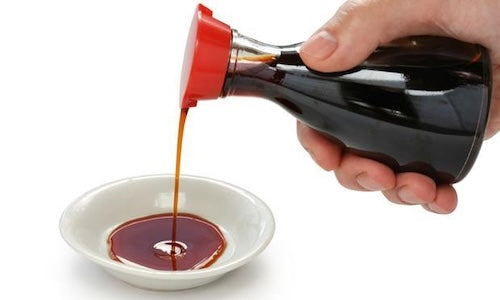Soy sauce is one of the world’s most beloved condiments, deeply rooted in Asian culinary traditions. Whether you’re dipping sushi, braising pork belly, or stir-frying vegetables, soy sauce adds a savory depth of flavor — known as umami — that transforms simple dishes into restaurant-quality meals.
But did you know that not all soy sauces are the same? China and Japan, two of the most influential soy sauce producers, craft their sauces in very different ways. Each has unique flavors, colors, and culinary uses that can elevate your cooking when used correctly.
In this guide, we’ll cover what soy sauce is, the main differences between Chinese and Japanese soy sauce, the types within each culture, and how to buy and store soy sauce for the best results.
What Is Soy Sauce?
Soy sauce is a fermented seasoning made primarily from soybeans, wheat, salt, and water. Through a process of inoculation with mold (koji), fermentation, extraction, and heating, it develops its iconic dark color, salty-sweet balance, and complex aroma.
Nutritionally, soy sauce contains amino acids, B vitamins, organic acids, and sugars. In cooking, it enhances flavor, balances richness, and provides a signature fragrance that defines countless Asian dishes.

Chinese Soy Sauce: Light vs. Dark
If you’ve browsed the sauce aisle in an Asian grocery store, you’ve likely seen bottles labeled Light Soy Sauce (生抽, shēngchōu) and Dark Soy Sauce (老抽, lǎochōu). Both are staples in Chinese cooking but serve different roles:
-
Light Soy Sauce (Shengchou):
Lighter in color, thinner in consistency, and saltier in taste. Used mainly for stir-fries, dipping sauces, marinades, and cold dishes. -
Dark Soy Sauce (Laochou):
Aged longer, thicker in texture, and less salty but richer in body. Often darkened with caramel coloring to give dishes a glossy appearance. Commonly used in braised pork belly, red-cooked meats, and stews.
Chinese kitchens often keep both on hand to balance flavor and color.

Japanese Soy Sauce: The Five Major Types
Japanese soy sauce has more variety, categorized into five distinct types, each designed for specific dishes:
-
Koikuchi (濃口醤油, dark soy sauce): The most common, accounting for 80% of Japanese production. Versatile and balanced for everyday cooking.
-
Usukuchi (薄口醤油, light soy sauce): Lighter in color but saltier. Often used in soups, simmered dishes, and Kansai cuisine.
-
Shiro (白醤油, white soy sauce): Pale and slightly sweet, with a higher wheat content. Perfect for dishes where color must remain light.
-
Tamari (溜醤油): Rich, less salty, and often gluten-free. Traditionally a byproduct of miso making. Commonly paired with sushi.
-
Saishikomi (再仕込, double-brewed soy sauce): Fermented twice for a thicker, luxurious taste. Best enjoyed with sashimi.

Key Differences Between Chinese and Japanese Soy Sauce
-
Ingredients:
Chinese soy sauce often uses soybean meal + wheat bran. Japanese soy sauce relies more on soybeans and roasted wheat for aroma and depth. -
Fermentation Method:
Chinese modern production uses low-salt solid-state fermentation (faster, sometimes just one month). Japanese soy sauce follows the high-salt liquid fermentation method (moromi), which takes longer but yields more complexity. -
Variety:
Chinese soy sauces are mostly divided into “light vs. dark,” while Japanese soy sauces offer more nuanced categories for specific culinary applications.
How to Choose and Store Soy Sauce
-
Check Labels: Look for production dates and amino acid nitrogen content (≥0.80g/100ml = premium quality).
-
Color Test: High-quality soy sauce has a reddish-brown hue, not pitch black.
-
Shake Test: Good soy sauce foams easily, and the bubbles last.
-
Smell Test: A rich, pleasant aroma indicates quality. Avoid those with sour or chemical notes.
-
Storage: Keep sealed in a cool, dark place. Refrigerate after opening for freshness.

Related Sauces in Asian Cooking
-
Seasoned Soy Sauce (味极鲜): Enriched with umami boosters, often replacing MSG.
-
Steamed Fish Soy Sauce (蒸鱼豉油): Sweeter, milder, tailored for delicate fish dishes.
-
Oyster Sauce: Thick, sweet-savory, perfect for stir-fries.
-
Fish Sauce: A Southeast Asian staple made from fermented anchovies, widely used in Thai and Vietnamese cooking.
Summary
Soy sauce is more than just a condiment — it’s a reflection of culture and tradition. Chinese soy sauce emphasizes practicality with its light vs. dark varieties, while Japanese soy sauce highlights refinement with its five categories. Both bring unique character to Asian cuisine.

For chefs, restaurant owners, and home cooks looking to stock up on authentic ingredients and essential kitchen tools, Chefco offers a wide selection of Asian cooking supplies — from sushi knives and prep tables to soy sauce storage solutions. Explore our collection and bring authentic flavor to your kitchen.


